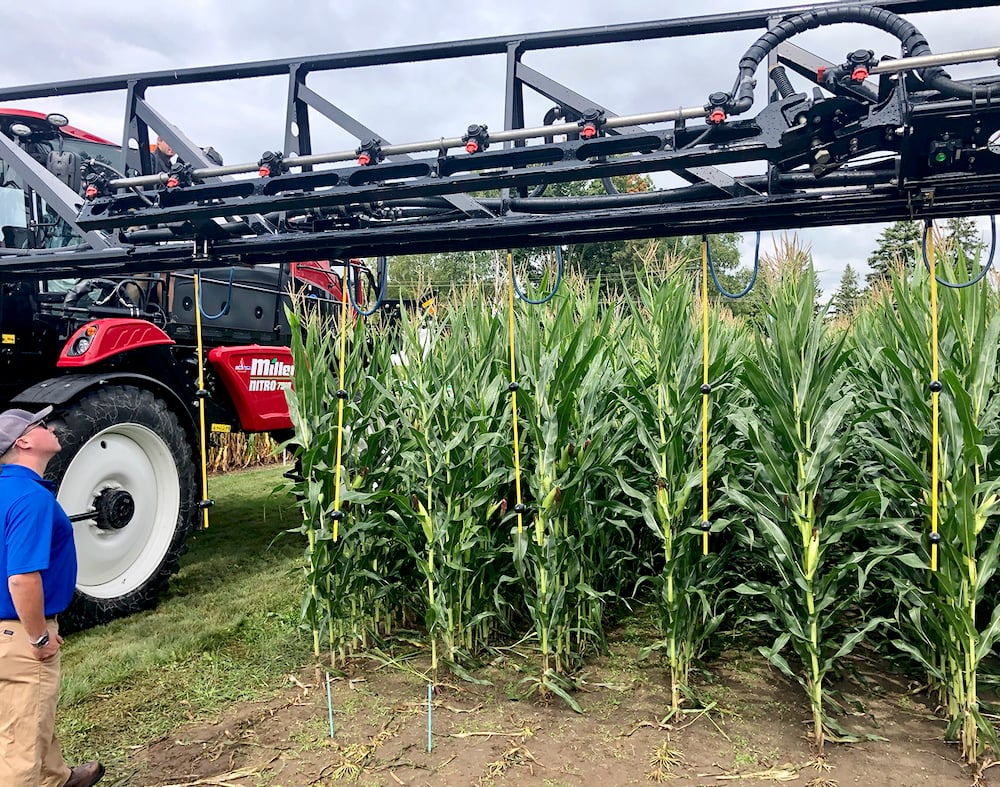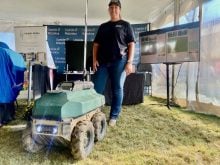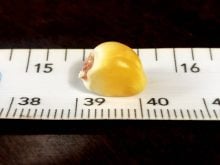Dan Petker is a convert to the Beluga drop hose system.
The Port Rowan cash cropper couldn’t find a positive return on investment by spraying corn until he hosted a 28-acre fungicide field trial that measured the efficacy and economics of the Beluga drop hose spray system versus overhead broadcast.
“These things made $36 per acre more than my over-the-top spray,” he said. “It took me 300 acres to pay off the whole sprayer. It made absolute sense.”
Read Also
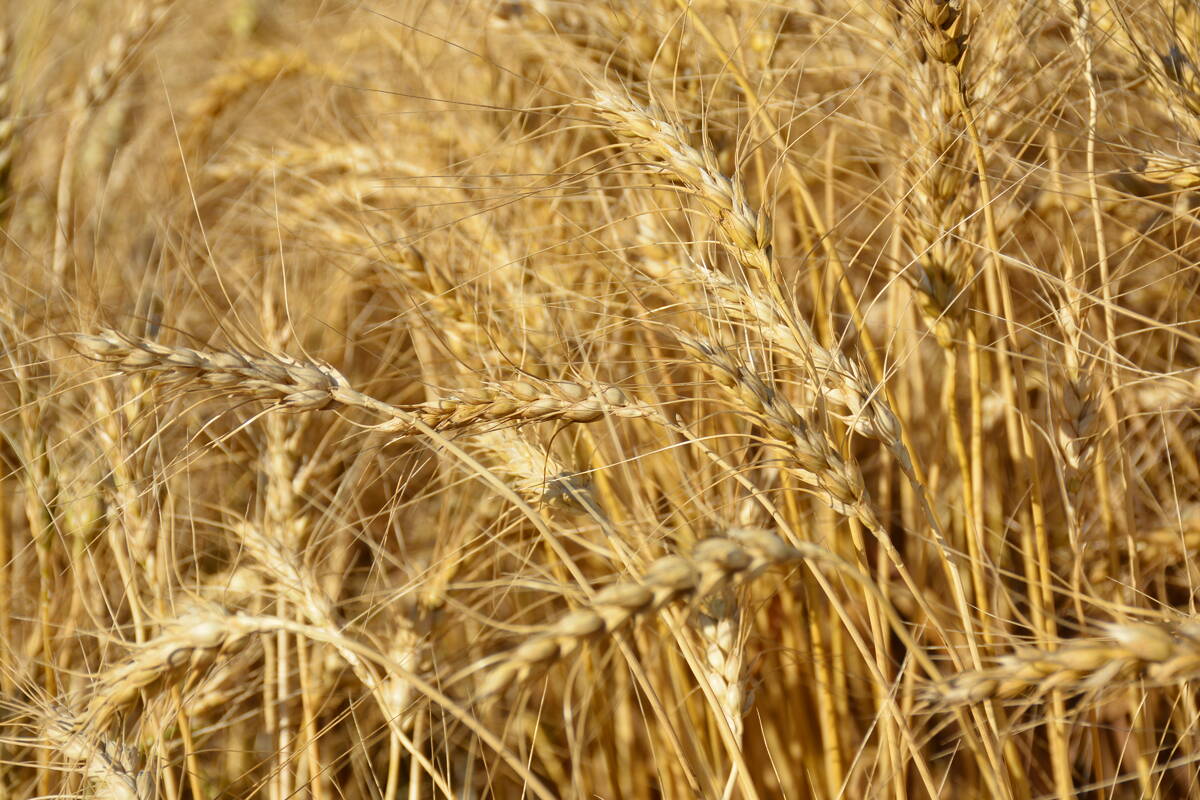
Scientists discover a gene that could triple wheat production
This discovery could give breeders a powerful new tool to boost yields without needing more land, water, or fertilizer.
Why it matters: The technology can offer improvements in fungicide application efficiency.
The trial used 48 60-inch drop hoses on a 120-foot sprayer, each housing two 110-degree flat fan 015 spray heads with 20 gallons per acre on 30-inch corn. The two outer hoses equipped with inward-facing nozzles contained the treatment, said Jason Deveau, an application technology specialist with the Ontario Ministry of Agriculture, Food and Rural Affairs. He launched the five-year study on Petker’s land in 2021 in partnership with University of Guelph colleagues.
[RELATED] Advanced corn hybrid with an RNAi trait to launch in Canada in 2023
Beluga drop hoses have a stiff, lightweight, low-profile nozzle body developed by Agrotop in Germany. The design minimizes snag potential in dense foliage, maintains plumb during application and provides a 120-degree spray coverage, according to the company.
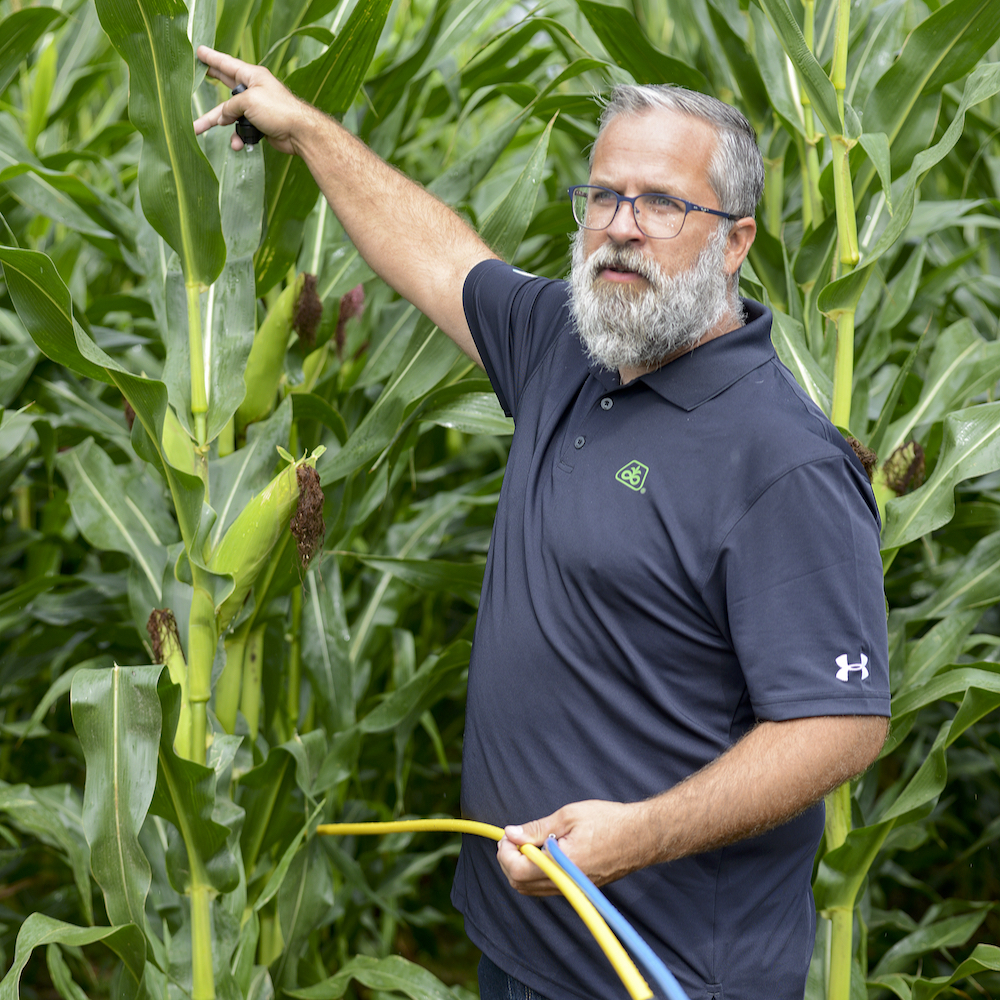
“These have a built-in deflector. This bullnose tends to shove things out of the way,” Deveau said. “The neat thing is where the nozzles are attached. They don’t stick out, so they don’t catch anything.”
At 15-inch spacing, the Beluga nozzles hit the corn-ear region of the canopy, providing 100 per cent diamond-shaped overlap spray for top and underside foliage coverage.
[RELATED] How to choose the right sprayer nozzle
“When I show this technology, some people will say, ‘well, if every drop hits, I can spray less.’ No, no, that’s not the lesson here,” said Deveau. “(With) a product that’s only going to give you 60 per cent, even if you do everything right, you have to do everything in your power to get those droplets where they need to go. And frankly, with this, you can’t miss.”
It takes approximately 60 seconds to install or uninstall the drop hoses, with no interference with boom folding or driving between fields.
“My dad, being an amazing human, drove that (80-foot) headland (with a 120-foot boom) at 12 miles an hour. Just beat the heck out of them,” Petker said. “I’m standing on the sprayer deck watching. The maximum of sway we saw was maybe like a 10-to-15-degree deflection, and it came right back in.”
Deflection was minimal even when dragged perpendicular to the headland’s rows. In fact, despite the hoses undergoing rigorous and brutal testing – including being dragged along gravel and soil with a lowered boom – the hoses were undamaged and returned to plumb.
Storage is also easy. The drop hoses rinse as quickly as any nozzle and fit within their original box for shelf storage.
Petker’s skepticism was reflected in the zip ties initially used to hold the mounting brackets onto the boom. Those were the only things that broke.
“There’s about 5,000 acres through them now,” he said, adding the five-year trial will develop a comprehensive data set on the Beluga system.
[RELATED] Transgenic corn touted for dairy feed efficiency
There are developmental improvements to be made, but the technology is evolving for use in corn. Agrotop representatives from Germany came to discuss initial corn spray trial results.
“It was originally designed to spray neonicotinoids in Europe, then three months later they weren’t allowed to spray neonicotinoids,” Deveau said. “We’re finding different usage patterns for them, and they’re (Agrotop) very receptive to change, which is a lot of fun.”
Deveau said the Beluga system provided a $27.76 per acre profit over the unsprayed check and a $33.37 per acre profit versus the overcast broadcast method. Unsprayed versus overhead broadcast showed a loss of $5.61 per acre.
The mean net revenue for each application reflected the same trend, with direct applications yielding higher mean net revenue over unsprayed checks and overhead broadcast underperforming, regardless of fungicide applied.
According to Deveau’s calculations, Petker invested $11,520 on 48 Beluga drop hoses and 192 nozzles, which is significantly higher than $720 to cover the cost of 72 nozzles for an overhead broadcast system.
However, the return on investment based on the mean net revenues of the 2021 study indicates that Beluga would pay for itself in 316 acres.
“We saw enough positive results, and we believe in good stewardship and proper placement of the products we’re using to maximize our efficiency and effectiveness,” Petker said.
“You’ve got to think forward, think different because we know eventually mandates will come on how we can use these things. Anything like Dicamba, Group 4 usage is already the bellwether of that. So why not go way ahead of time?”
Study results can be found at the Sprayers101 website.




